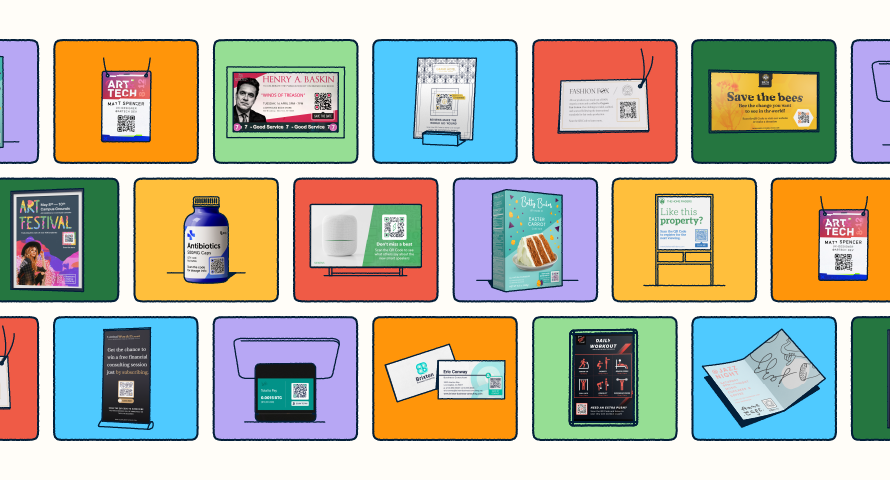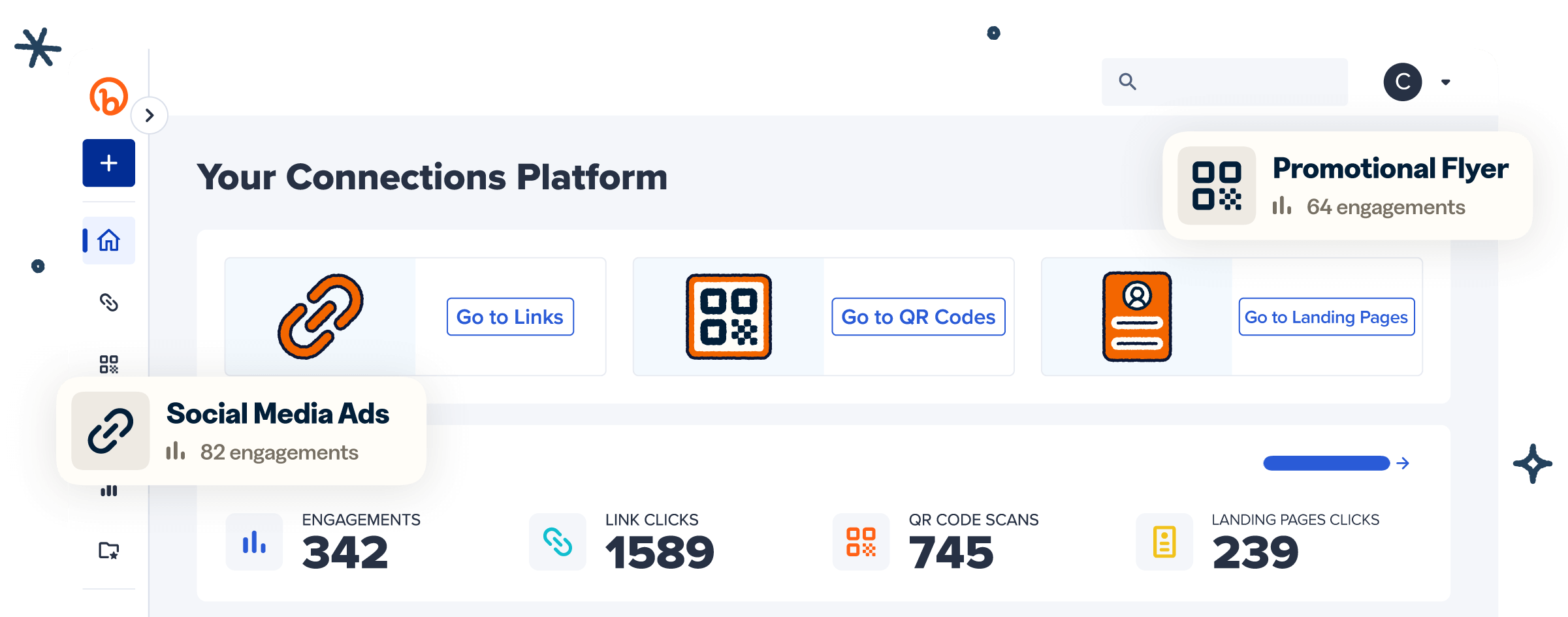GET INSPIRED
See What’s Possible: Dive Into Our QR Code Inspiration Gallery

Explore the trending topics that will inform what’s next for mobile marketing and our predictions for the year to come.
Boost sales and engagement with QR Codes to market household goods.
Learn about augmented reality with QR Codes and their approach for interactive experiences.
Discover how contactless hotel experience short links are transforming guest convenience.
Boost your networking ability with QR Codes on business cards.
Learn how mobile deep linking can benefit app engagement and user experience.
Discover how digital business cards simplify networking and sharing info.
Maximize SMS marketing with these proven best practices.
Buying a dream home is stressful. Make it smoother with convenient connections, one scan at a time.
Discover how QR Codes enhance security and customer experiences in financial services.
GET INSPIRED

Knowing how your clicks and scans are performing should be as easy as making them. Track, analyze, and optimize all your connections in one place.
